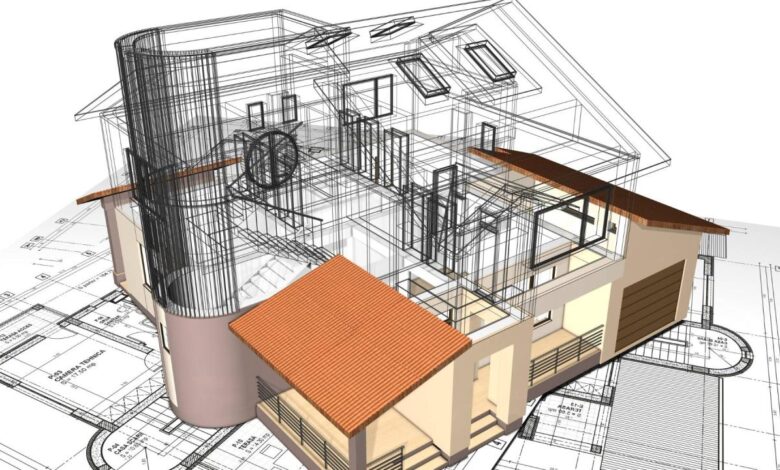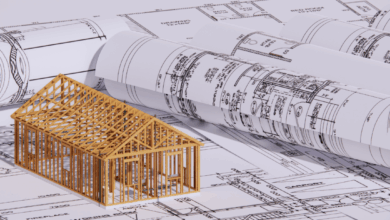Beyond Blueprints: Architect’s Essential Business Skills

The practice of architecture has long been celebrated as a noble fusion of art and science, demanding exceptional spatial reasoning, aesthetic sensitivity, and a meticulous grasp of engineering principles to transform visionary concepts into enduring, habitable structures.
However, for any individual aspiring to a thriving, influential career—whether leading a boutique studio or managing a team in a global firm—relying solely on technical drafting skill or creative genius is a pathway destined for financial struggle and operational chaos, proving insufficient in the complex reality of the modern construction industry.
An architect’s professional longevity is, in fact, determined by a sophisticated and often undervalued skill set that extends far beyond the traditional drawing board, encompassing a critical command of business, financial, and management principles that are indispensable for navigating the immense logistical, contractual, and economic risks inherent in every project undertaken.
This realization compels the contemporary architect to assume the crucial, dual role of both master designer and strategic business owner, mastering everything from accurate fee projection and contract negotiation to meticulous risk management and proactive client acquisition, ensuring that the firm’s artistic integrity is balanced by rigorous financial solvency.
Without a deep comprehension of these essential business skills, the most brilliant creative vision remains merely an abstract, unbuildable dream, cementing the truth that in architecture, the ability to design the business itself is just as vital as the ability to design the building.
Pillar One: Financial Literacy and Economic Stewardship

The most critical skill distinguishing a successful principal from a struggling artist is the ability to view design through a precise financial lens, ensuring every project delivers value while maintaining the firm’s profitability.
1. Cost Modeling and Fee Projection
Accurately projecting a project’s financial trajectory and setting profitable fees requires meticulous internal cost knowledge.
A. Mastering the Cost Multiplier: A successful architect must know the firm’s Target Multiplier, which is the factor used to determine the minimum hourly billing rate by covering direct labor cost, overhead expenses, and a necessary profit margin.
B. Budgeting by Phase: The project manager must break the total fee down and meticulously allocate specific labor hours and budget to each architectural phase (Schematic Design, Construction Documents, etc.) before starting the work.
C. Resource Allocation Strategy: The architect must strategically staff projects by assigning personnel based on their skill set, experience level, and associated billing rate, optimizing labor cost and efficiency.
2. Value Engineering and Cost Control
The architect is the primary steward of the client’s budget and must guide decisions to protect both the design integrity and the financial investment.
A. Life-Cycle Cost Analysis (LCCA): An architect must justify design choices not just on initial cost, but on the total cost of ownership, proving that a more expensive material or system (e.g., high-performance glazing) provides long-term savings in energy and maintenance.
B. Distinguishing Value from Price: The architect’s financial role is to advise the client on Value Engineering (VE)—a process that seeks to achieve the required function at the lowest cost over the building’s lifespan—protecting quality against shortsighted cost-cutting.
C. Real-Time Budget Monitoring: Utilizing BIM and project accounting software to track budgeted hours versus actual spent hours provides immediate financial intelligence, allowing for mid-project correction before budgets are exhausted.
3. Understanding Project Finance and ROI
For commercial projects, the architect must speak the language of the investor, linking design directly to measurable economic returns.
A. Maximizing Usable Area: The architect designs efficient building cores and layouts to maximize the net usable area (rentable space) relative to the gross area, directly increasing the client’s rental income potential.
B. Market Value Creation: Quality architecture, excellent planning, and sustainable certification (like LEED) are demonstrably linked to higher property valuations and lease rates, a critical factor the architect must articulate to justify the design fee.
C. Managing Cash Flow: The architect must ensure timely invoicing and diligent Accounts Receivable (A/R) management for the firm, as even profitable projects can fail if revenue collection lags behind salary expenditures.
Pillar Two: Legal Acumen and Risk Management
The architecture firm carries immense legal liability for its designs, making contractual precision and understanding the limits of professional responsibility absolutely vital for survival.
1. Negotiating and Interpreting Contracts
The contract is the definitive legal document defining the firm’s entire relationship with the client and its financial exposure.
A. Scope Clarity and Exclusions: Contracts must meticulously define the scope of services to be provided and, crucially, explicitly exclude what is not included (e.g., geotechnical reports, specialized lighting design) to prevent uncompensated work.
B. Change Order Discipline: The project manager must be disciplined in issuing formal Change Orders (COs)—documenting any client-requested work outside the original scope, specifying the fee increase and time extension—before proceeding.
C. Dispute Resolution Mechanisms: Contracts should legally mandate a structured process for conflict resolution, typically starting with mediation or arbitration, to avoid devastating and costly litigation.
2. Liability and Risk Protection
The architect is legally responsible for the public’s safety, requiring stringent professional safeguards.
A. Errors and Omissions (E&O) Insurance: The firm must maintain comprehensive E&O insurance to cover financial losses resulting from design errors, omissions, or professional negligence, a non-negotiable cost of doing business.
B. Standard of Care: The firm must ensure all services meet the Standard of Care—the level of competence expected of other architects in the same region, size, and time frame.
C. Site Authority Clarification: Contracts must clearly define the architect’s limited role as Site Observer, not Supervisor, explicitly placing liability for construction means, methods, and site safety onto the General Contractor.
3. Code Compliance and Zoning**
The architect must operate as a quasi-legal expert, integrating regulatory constraints into the creative process.
A. Mastering Regulatory Frameworks: A core business skill is understanding and applying complex Building Codes, Fire Codes, and Zoning Ordinances from the earliest design stages to ensure the project is legally viable for permitting.
B. Accessibility Mandates (ADA): The architect holds the legal and ethical responsibility to ensure designs meet all standards for Universal Access, mitigating the risk of expensive lawsuits and necessary retrofitting.
C. Permitting Strategy: Effectively managing the documentation and submission process for regulatory approval is a business function that directly impacts the project’s time-to-market and financial schedule.
Pillar Three: Practice Management and Operational Efficiency

The creative output of the firm must be supported by a hyper-efficient operational backbone that maximizes staff utilization and manages time effectively.
1. Project Management and Scheduling
Project managers need to excel at logistics, resource allocation, and team motivation.
A. Developing the Work Plan: Every project requires a detailed Work Plan that breaks the process into manageable phases and tasks, assigning clear deadlines and budget hours to every team member.
B. Staff Utilization Tracking: Managers must track the utilization rate (billable hours versus total hours worked) for all staff, ensuring that labor resources are optimally converted into revenue.
C. Communication Protocols: Establishing clear internal and external communication standards (e.g., document control, RFI response times) prevents costly delays and misinterpretations between the design team and the contractor.
2. Cultivating a High-Performance Culture
A firm’s human capital is its most valuable asset; strategic investment in personnel yields high returns.
A. Recruitment and Retention: A core management skill involves recruiting talented staff and, more importantly, retaining them through competitive compensation, mentorship, and a supportive culture.
B. Technology and Training Investment: The firm must strategically invest its profits into advanced technology (BIM, visualization software) and Continuous Education (CE), ensuring staff skills remain cutting-edge and billable.
C. Performance Evaluation: Establishing transparent, fair, and objective performance metrics linked to project success and profitability motivates staff and informs professional development.
3. Client Relationship Management (CRM)
Client satisfaction is the most economical form of marketing, driving repeat business and positive referrals.
A. Proactive Communication: The architect must manage client expectations by providing consistent, clear updates on budget, schedule, and potential risks, anticipating problems before they become crises.
B. Managing Expectations: Successfully balancing the client’s demands with budgetary, regulatory, and engineering realities requires exceptional negotiation and persuasive communication skills.
C. Post-Occupancy Evaluation: Following up with clients after the building is occupied demonstrates commitment to the project’s long-term performance and generates valuable feedback for future design improvements.
Conclusion
The successful 21st-century architect is an integrated professional who masters both art and commerce.
Financial literacy is the crucial foundation for every profitable design decision and firm operation.
The architect must use strategic cost modeling, LCCA, and VE to convert abstract vision into tangible economic value for the client.
Mastering contract negotiation, E&O insurance, and Change Order discipline is mandatory for mitigating high professional liability risk.
Effective practice management relies on meticulously tracking staff utilization, project hours, and cash flow to maintain financial health.
The ability to successfully integrate design excellence with robust business strategy defines true architectural leadership and ensures the firm’s ability to create a lasting, quality built legacy.




